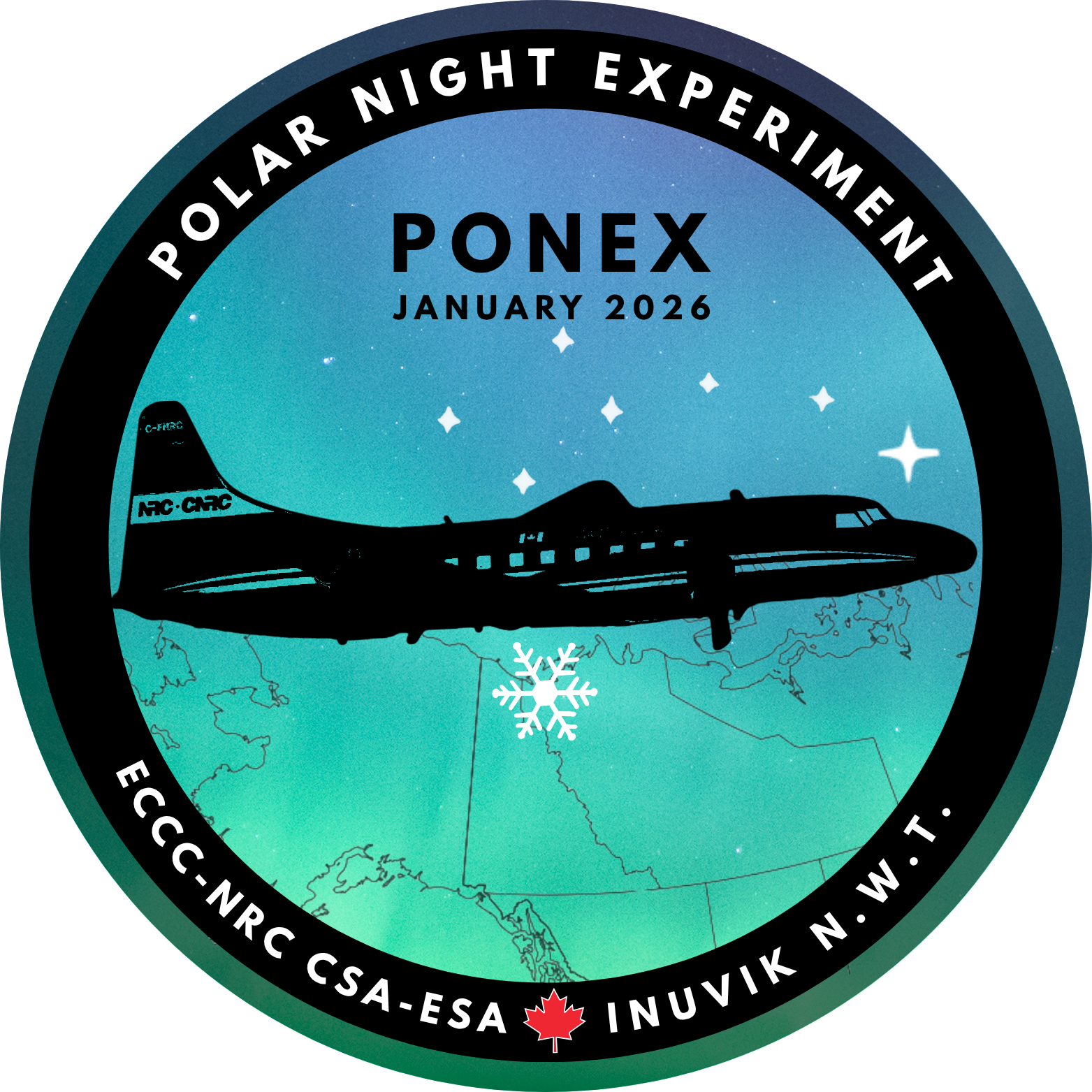The Polar Night Experiment (PONEX) Aircraft Campaign for the Atmospheric Observing System Satellite Mission
PONEX is a surface and aircraft campaign designed to explore atmospheric physics and chemistry in the Canadian Arctic in polar night and polar sunrise conditions. The campaign will conduct satellite calibration/validation experiments for two satellite missions and improve Canadian numerical weather prediction (NWP) models. This is the first experiment of its kind.
PONEX is designed to serve the AOS-HAWC (launch: ~2033) Sub-Orbital component. PONEX also serves the European Space Agency’s EarthCARE mission (launched May 2024) with regard to calibration/validation of the satellite’s sensors. The entire campaign is funded by the Canadian Space Agency (CSA) with contributions from ESA.
Background:
- The Polar regions are an integral part of the Earth's energy budget and climate.
- Clouds are an important climate component modulating radiation transfer and the hydrological cycle.
- Arctic ice cloud formation during winter is poorly understood due to lack of observations and their remoteness.
- Arctic cloud formation is strongly related to aerosol-cloud interaction processes.
- Large concentrations of aerosols in the Arctic during winter are associated with long-range transport of anthropogenic aerosols from the mid-latitudes.
- Ice clouds result in the dehydration of the troposphere and change of the radiation regime and strong radiative cooling of the surface.

Rapid Arctic warming weakens the polar vortex, allowing cold air to move south and warm air to shift north.

Cold air gradients fuel intense winter storms and severe weather.

How do natural and human-made aerosols, including sulfuric acid and newly formed particles, influence the formation and composition of OTICs during polar night?

Radiative properties and formation mechanisms of OTIC during polar night remain poorly understood.
- Cloud genesis, radiation transfer and chemical processes in Arctic during polar nights dramatically differ from those during polar days.
- Despite numerous airborne field campaigns in Arctic regions, all of them were conducted during polar days or during polar sunrise or sunset.
- Until now, the Arctic environment during nighttime remains poorly explored.
- PONEX will conduct the first Arctic polar night airborne field campaign.
ACME-V
ARCPAC
ARISE
BASE
FIRE.ACE
ISDAC
M-PACE
NETCARE
PACEPAC
SHEBA (ship)
VERDI
NETCARE
ARCSIX
ACCACIA
ACLOUD
ASCOS (ship)
AMISA
ASTAR
NETCARE
SoRPIC
ARCTAC flight tracks
MOSAIC (ship)








